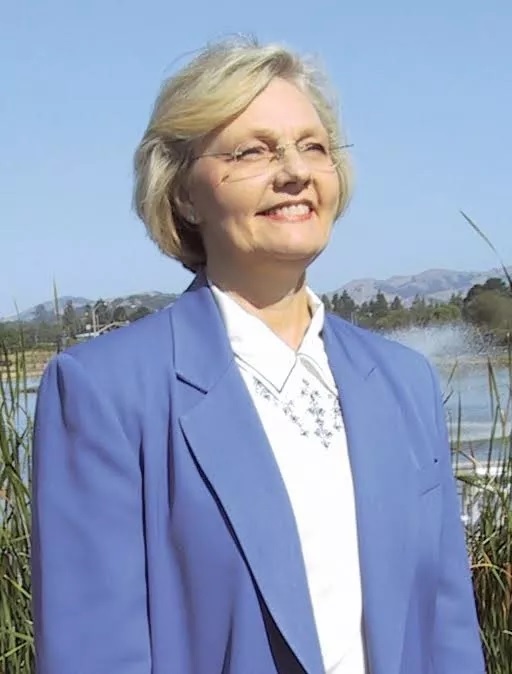On Friday, January 8, the latest phase of the power struggle between the Metropolitan Transportation Commission and the Association of Bay Area Governments, a.k.a. the merger planning process, had its kickoff at the MetroCenter, the agencies’ Oakland headquarters.

Merging MTC, the region’s transportation planning agency, and ABAG, its land use and housing planning agency, is a high priority for the Bay Area’s business and political elites. Witness the fervent advocacy of such a melding in two op-eds—one by Bay Area Council President Jim Wunderman, the other by SPUR Regional Planning Director Egon Terplan—that appeared in the “Insight” section of last Sunday’s Chronicle. According to the twinned appeals, solving “the region’s greatest challenges” (Terplan)—“its “housing, transit, climate ills” (Wunderman)—depends on fusing MTC and ABAG into a regional government that can overrule “decision-making at the local level,” thereby providing “a welcome balm for a region where parochial interests and narrow agendas often derail our best-laid plans” (Wunderman).
A more effective regional government could be a good thing — but not the kind envisioned by the Bay Area Council or SPUR, which is both undemocratic and, with its genuflection to unlimited growth, ecologically benighted.
In any case, the likelihood that the newly inaugurated planning process will result in a merger seems questionable. On January 8, two MTC Commissioners, Marin County Supervisor Steve Kinsey and Solano County Supervisor Jim Spering, who’s chairing the Joint Committee, flatly stated that merger was not their goal. A third, MTC Chair and Santa Clara County Supervisor Dave Cortese, observed that although the commission was participating in the merger planning process, it had officially declared its preference for “functional consolidation.”
“Functional consolidation” is code for the hostile takeover of ABAG’s land use planning staff that MTC initiated last June. ABAG depends on an annual allocation of $3.9 million from MTC to fund its land use planners and associated costs. According to ABAG staff, that figure amounts to 28% of the agency’s total revenue. Alluding to but never specifying inefficiencies in the current set-up, MTC commissioners voted to continue that funding only through the first half of Fiscal Year 2015-16, after which MTC would absorb ABAG’s land use planning function and transform itself into a one-stop regional planning agency.
In light of MTC’s own autocratic style and growth mania, that prospect should alarm democrats and environmentalists. It should also worry equity advocates, given MTC’s attempt last July to remove key anti-displacement language from the 2017 update of Plan Bay Area. Opposed by ABAG staff, that effort failed after the 6 Wins Coalition for Social Equity demanded that the language be retained.
The transportation planning agency also subsequently backed off from its decision to raid ABAG’s planning staff, in the face of protest from many of ABAG’s member cities (though, significantly, not from the big three—San Jose, San Francisco, and Oakland) and, above all, from organized labor. ABAG staff are unionized; MTC’s are not. The local chapter of SEIU Local 1021 threatened to take legal and legislative action—the latter at the state level—if MTC moved forward with the takeover.
But the takeover threat is only dormant, not dead. Though ABAG staff issued detailed critiques of the “consolidation” proposal put out by Cortese and MTC Executive Director Steve Heminger, on October 28 the ABAG Administrative Committee unanimously approved (sight unseen) a resolution crafted by Cortese stipulating that unless the two agencies approved a merger by July 1, 2016, the takeover would proceed.
Some called that vote a sell-out of Bay Area cities. At best, it was a very risky move, rendered dubious not only by the committee’s rushed and superficial deliberation, but also by the rumor that MTC’s eighteen voting commissioners were evenly split over the Heminger/Cortese proposal. That proposal however never came up for a vote. Instead, later on the 28th, MTC unanimously approved the resolution to hire consultants to study and draft a merger plan.
A consultant team from Management Partners was hired in December. They’re being paid $275,000 to come up with a merger implementation plan by June 30. Their work will be jointly overseen by the MTC Planning Committee and the ABAG Administrative Committee.
On the morning of January 8, the leaders of the consultant team, Project Director Andy Belknap and Project Manager Lynn Dantzker, presented their preliminary work plan to a joint meeting of the two committees:
January – February: conduct interviews, facilitate Joint Committee workshops, develop stakeholder/community engagement plan, complete work plan and schedule
February – March: implement stakeholder/community engagement plan, document/research past merger efforts, analyze existing transportation and regional planning models (California and nationally), document statutory mandates, governance structures, agency missions and other organization programs, obtain financial and human resources info for the two agencies, document stakeholder/community engagement input, develop alternative models for analysis
April – May: Conduct analysis with respect to project objective, evaluation criteria, mission, governance, organizational structure implications, human resources/employee relations issues, cost; develop alternative models/options from functional integration to full merger; develop five-year ABAG financial forecast under alternative options
May – June: Develop task and timing schedule to implement alternatives; on June 26 deliver Merger Implementation Plan for options selected
This is a daunting assignment to complete in five months. Nevertheless, it lacks an essential component: an explicit rationale.
As ABAG Admin Committee and Novato Mayor Pat Eklund observed: “There doesn’t appear to be a process for us to identify what is the problem we’re going to solve.”
Indeed, the problem to be solved has been missing from the start of the MTC offensive. What, exactly, is the difficulty that a merger of the two agencies, or for that matter, an MTC appropriation of ABAG’s land use planners, are supposed to remedy? Amazingly, it’s never been defined.
Merger advocates would say that the problem is fragmented regional governance. They’ve repeatedly pointed out that the Bay Area is the only region in California where separate agencies are responsible for land use and transportation planning.
So what? The point isn’t to do what others do; it’s to do whatever needs to be done well. Consolidation for consolidation’s sake makes no sense. Nobody seems to have noticed, by the way, that Heminger himself has remarked that elsewhere in the country, regional land use and transportation planning are carried out by different agencies.
You’d think that pinning down the problem(s) at hand would be the first task that the consultants would set themselves.
You’d also think that by January 8, Belknap and Dantzker would have sufficiently familiarized themselves with recent history at the MetroCenter to have realized that the organizational crisis is rooted in ABAG’s financial dependency on MTC, and that, accordingly, they would be directly addressing that dependency. But that’s not the case, as indicated by their extended exchange with Spering.
The Solano County supervisor asked for “more detail on the financial discussion.”
Belknap’s initial response was vague: “You have to make sure that these entities remain financially sustainable at the end of the day,” adding that’s “less of an issue for MTC, which as an MPO [Metropolitan Planning Organization], has state and federal funding sources.” It’s “probably more of an issue for ABAG.”
Spering pressed him: “Not knowing what responsibilities they’ll have at the end of this process, how are you going to determine what their final needs are?”
Belknap: “It’s not going to be easy, but we’re going to have to make some estimates and assumptions—particularly challenging, because these organizations, to some degree, are depending on outside funding sources, but we’re going to look at that…particularly in the context of ABAG.”
Dantzker jumped in, explaining that they were going to do two five-year budget models for ABAG, one based on how the agency “currently function[s],” the other “under the September action by MTC…They’re forecasting.”
(I emailed Dantzker asking what she meant by MTC’s “September action.” She wrote back: “To clarify, I meant implementation of the functional consolidation of the planning departments within MTC as set forth by MTC Resolution 4210, which I believe was adopted by MTC on October 28, 2015.”)
Spering shot back: “Are you going to be looking at ABAG’s ability for additional funding sources” such as “raising membership dues?…What are you talking about?”
Dantzker: “What it would take to have a balanced budget…We’d say, you have to increase revenue. How they would do that—whether it’s dues or grants or so on, we would just say that is the revenue that would have to be raised in order for them to continue their functions, but certainly from a policy standpoint, it wouldn’t be up to us to decide what that would be—just that it would have to be done.”
Spering: “I just want to make sure that it’s ABAG’s responsibility to figure out what the funding source is…”
Dantzker: “Certainly, certainly.”
Spering: “MTC’s not the bank.”
Dantzker: “It’s just a revenue and expenditure analysis.”
If the consultants aren’t going to chart realistic paths to financial independence for ABAG, why bother? Last fall, ABAG staff made it clear that if MTC withholds its $3.9 million, an allocation underwritten only by a Memorandum of Understanding between the two agencies, ABAG may well go bankrupt.
A merger implementation plan that doesn’t include provisions for ABAG’s financial security is unlikely to be approved by MTC, which means that “functional consolidation” would go forward in July. The absence of such provisions in the consultants’ work plan is notable, since MTC drafted the Request for Qualifications to which Management Partners responded. The RFQ says nothing about seeking ABAG’s financial independence.
Is the transportation planning agency just going through the (very expensive) motions to appease the union (which supports a merger), figuring that it can wait another six months to grab ABAG’s land use planning staff, while pointing to its participation in the merger planning study as an expression of good faith?
The Joint Committee’s next meeting is on Friday, January 22, at the MetroCenter from 9 am to 12 noon. Almost all of the three hours will be devoted to a workshop led by Management Partners’ Jan Perkins, who will be soliciting opinions on the consultants’ draft work plan. The good news: The first main item on Perkin’s list is “Create a Shared Understanding of Problem(s) to be Solved.” The other three:
- Consensus on Study Objectives
- Consensus on Key Principles for Evaluating Options
- Feedback on Community Engagement/Stakeholder Plan
As with everything else in the merger planning process, the time allotted to discuss and finalize these four goals is ridiculously short.
But what’s even more concerning than the compressed timeline is an element in the “Proposed Stakeholder Engagement Plan”—the so-called “Regional Stakeholders” that have been singled out for individual meetings with the consultants: The Bay Area Council, the Building Industry Association (BIA) Bay Area, Greenbelt Alliance, and SPUR.
Every one of these organizations is hostile to democratic planning and decision-making. Every one, including Greenbelt Alliance, supports the continuing evisceration of the state’s premier environmental law, the California Environmental Quality Act. BAC, SPUR and the Greenbelt Alliance are deeply allied with the real estate industry; BIA, is the chief local lobbyist for that industry. It follows that all four seek supply-side solutions to the Bay Area’s affordable housing crisis. Except for BIA, they all tout social equity but have at times opposed measures that would substantially spread the wealth and expand opportunity. BIA doesn’t even bother with lip service (it’s now hoping to convince the U.S. Supreme Court to invalidate San Jose’s inclusionary housing ordinance).
I assume that the reason these four have been identified as regional stakeholders extraordinaire is that they all operate at a regional level and have long associations with both MTC and ABAG. Indeed, except for BIA, they’ve all gotten thousands, if not hundreds of thousands, of dollars’ worth of grants from those two public agencies. What enables their regional scope is their ties to the biggest businesses in the Bay Area, who contribute to their treasuries. They’ve repeatedly trumpeted their views in numerous prominent venues, including the MetroCenter. They’re the last ones who need private hearings in which to trumpet them further.
The proposed stakeholder engagement plan also provides for “up to three open regional meetings for interested stakeholder organizations and individuals.” It says nothing about format. Is this where the rest of us are supposed to voice our views, especially those who fear that merging MTC and ABAG will simply aggrandize the power of local elites? Why aren’t such concerns getting equal time?
I’ve asked MTC Deputy Executive Director Alix Bockelman who decided that BAC, SPUR, BIA, and Greenbelt Alliance deserve special treatment and what criteria went into that decision. Whatever her reply, so far the merger planning process bodes poorly for Bay Area democracy.




